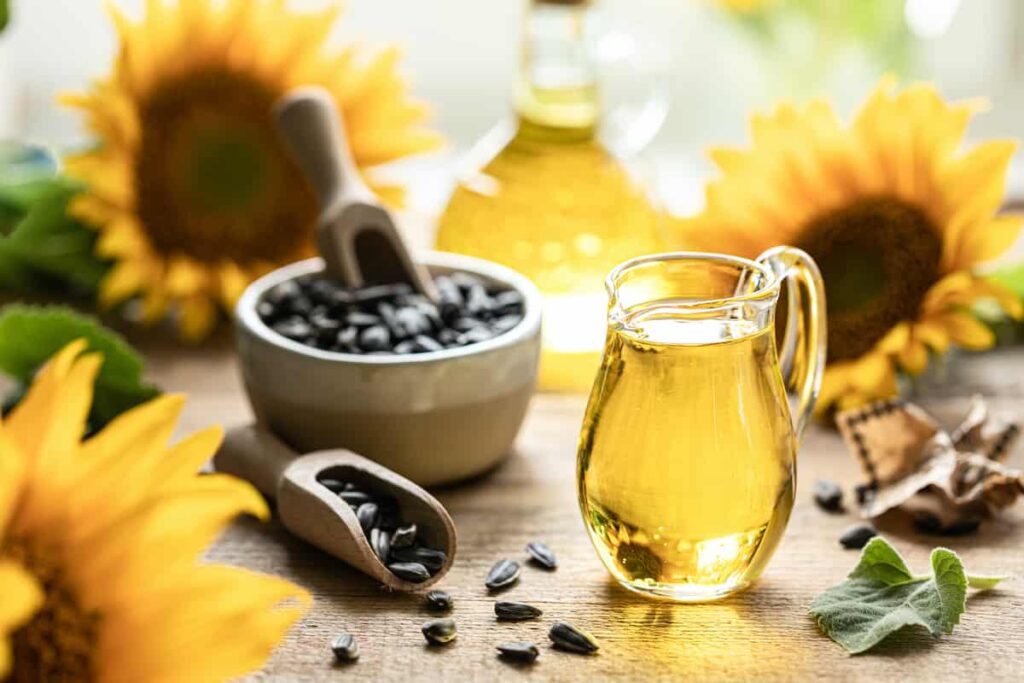All About Sunflowers
Sunflowers are Native American plants with an international history.
Native Americans grew and selected sunflower varieties for flour, food, and oil. The Spanish brought this new-world plant to Europe in the 1500s and by the 1700s and 1800s the Russians were growing them in large quantities. It eventually made its way back to North America in the form of Russian varieties that we still grow today, such as ‘Mammoth Russian’. Canadian and American farmers now grow sunflowers primarily for oil production, but plant hybridizers also started creating attractive varieties for the garden as well. Today, there are many versions of the sunflower, some looking very different from the original tall, one-headed annual plant.
Breeders have shrunk varieties to be smaller, and bred them to have colorful, multiple heads per plant. The result is a garden flower that shines throughout the summer and fall. Some newer varieties to try include ‘Velvet Queen’ with its 6 foot-tall stalk and deep-mahogany colored flowers, ‘Autumn Beauty’ with its 5 foot-tall plants and a mix of yellow, orange and red flowers, ‘Moonshine’ with it unique pale-yellow flowers on a 6 foot-tall plant, ‘Yellow Spray’ that grows only 1 to 2 feet tall and ‘Sungold’ with its 3 foot-tall plant and fuzzy, yellow blooms. For cut-flower arrangements, try pollenless varieties such as ‘Sunrich’, to reduce the yellow pollen indoors.
Sunflowers in the Modern Garden
While we mostly know sunflowers as annuals, there are perennial varieties as well. These types are good for the flower garden because they consistently come back each year, providing bright, cheery flowers with less work. Most are hardy in USDA zones 4 to 9. One of the most popular perennial sunflowers is ‘Maximillian’. This sunflower grows up to 8 feet tall, depending on the soil and water conditions, producing small, yellow sunflowers from late summer until frost.
Swamp sunflowers grow 6 feet tall and are tolerant of salt spray and poor-soil conditions. This is a good one for coastal areas. Another type of sunflower is the Mexican sunflower or Tithonia. This bushy perennial is only hardy in warm areas, so it’s mostly grown as an annual. It produces a 4 to 6 ft tall bushy plant with small orange sunflower-shaped flowers in late summer. There are also varieties, such as ‘Red Torch’, with red-colored flowers. It’s another good cutting-flower type sunflower. Sunflowers are not only great additions to a flower and vegetable garden for their food and beauty, but they are also essential habitat plants for pollinators as well.

Butterflies, beneficial insects, hummingbirds and birds flock to sunflower heads for food, pollen and nectar. Mexican sunflowers are particularly good at attracting Monarch butterflies as they migrate through the country. Butterflies and insects enjoy the flower pollen and nectar while birds feast on the seeds. If growing sunflowers for wildlife, remember not to grow pollen-less varieties. Plant tall varieties along a fence to block an unsightly view, or try them in the back of the flower border or along the side of the house or garage.
Mix and match sunflower plants in the garden with other annual and perennial flowers. Plant tall varieties along a fence to block an unsightly view, or try them in the back of the flower border or along the side of the house or garage.
Designing with Sunflowers
For kids, create a ‘sunflower house’. Mark out a circle in a full sun location with a 3 to 4 ft-wide diameter in the middle. Till and amend a strip of ground around the circle with compost. Leave a 2 to 3 ft-wide opening unplanted for the door. Choose tall varieties that will create a sizable ‘roof’. In spring, help your kids plant the circle with their favorite varieties. Keep them well-watered and then let the sunflowers grow together without thinning. Once they form heads, gently tie the tops of the sunflower stalks together to form the roof. Leave the grass as-is, or place cardboard for the ‘floor’. Let the kids bring toys and other fun objects into their fun summer home!
You can also use sunflowers instead of corn in a Native American ‘Three Sister’s Garden’. Plant pole beans to grow up the clump of 3-week old sunflower stalks, and plant winter squash and pumpkins around the base of the clump 3 weeks after the beans. The beans will clinb up the flowers and the low-growing squash will shade out weeds and prevent the soil from drying out.
Sunflower seeds are popular for eating and birds love them, too. When growing sunflowers for the seeds, once the petals fade, protect the flower heads by placing paper bags over them. This will prevent the birds from getting the maturing seeds. Once you can run your hand over the seed heads and the seeds easily drop out, harvest the sunflower head and let it finish maturing in a protected shed or garage.
There is also another way to eat sunflowers: grow a multiple-headed variety! Once the flower buds form, but before they start opening to show color, harvest the flower bud just below the blossom. Steam it like a glove artichoke and dip it in butter. You’ll be amazed at the sunflower/artichoke-like flavor!
